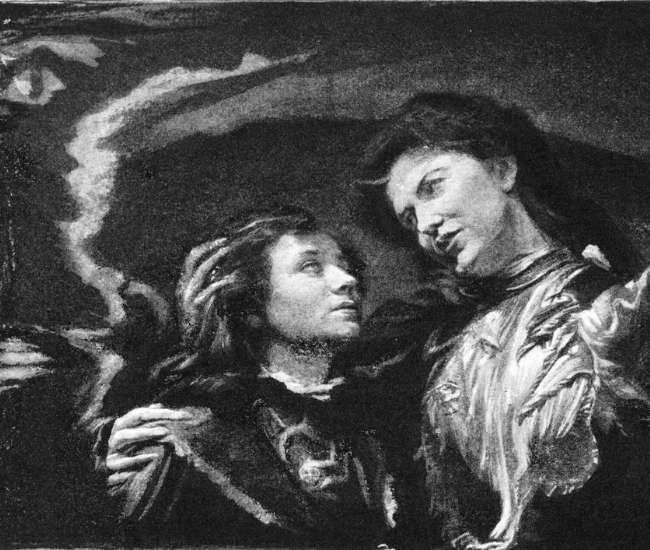The Turn of the Screw by Henry James
What's It About?
Haunted governesses or haunted directors?Published in 1898, the Henry James novella, The Turn of the Screw, has spawned dozens of dramatic interpretations, including movies, television films, an opera, a ballet and a Broadway play.
The story of a young governess who arrives at a country estate to care for two orphans has always been open to interpretation. Does she begin to see ghosts, or descend into madness?
The latest big-screen version, titled The Turning, opens today. Its trailer predicts straightforward horror. The director, Floria Sigismondi, is also a photographer, which is evident in the film’s contrast of beauty with threat, its foreboding images, and spooky lighting in dark, forbidden corners.
Sigismondi’s credits include music videos (Marilyn Manson, David Bowie, Katy Perry, Christina Aguilera), a feature about the girl rock band, The Runaways, and episodes of Hulu’s The Handmaid’s Tale.
Mackenzie Davis (Terminator: Dark Fate, TV’s Halt and Catch Fire, and “San Junipero,” the Emmy-winning episode of Black Mirror) is the governess who quickly descends into a constant state of terror. Finn Wolfhard (Stranger Things and The Goldfinch) is the troubled teenage Miles, and Brooklynn Prince (The Florida Project) is his younger sister Flora.
Executive produced by Steven Spielberg, The Turning was filmed in Ireland. Killruddery House in County Wicklow is cast as Bly House of the book, and the film takes place in Maine in the mid-1990s instead of England in the late 1800s.
All previous dramatizations of The Turn of the Screw had their own twist on the plot. Film critic Pauline Kael called The Innocents, the 1961 movie with Deborah Kerr as the Victorian governess and scripted by Truman Capote, the best ghost story she’d ever seen.
A CLASSIC TALE OF TERROR TOLD BY AN UNRELIABLE NARRATOR
The genius of Henry James was to have his Gothic tale told by an unreliable narrator, the unnamed governess. Charmed by the children and the beautiful estate, her equanimity is shattered when she sees a stranger atop the house’s tower. She questions the housekeeper and realizes she’s seen Quint, the former valet who’d been left in charge of the household. He was pure evil, the housekeeper tells her. He’s also dead.
The governess comes to fear that the spirits of Quint and the former governess, Miss Jessel, want to lure the children to their deaths so that they might join them. She is determined to discover what the children know. Do they see the apparitions, too? Are the children precociously evil, or are they innocents at risk? And at risk from what — the ghosts, or the obsessions of the governess?
The psychological terror of the book is heightened by the words of the governess: her cadences, disjointed sentences and hesitations. “In going on with the record of what was hideous at Bly,” she says, “I not only challenge the most liberal faith — for which I little care; but — and this is another matter — I renew what I myself suffered, I again push my way through it to the end.”
An explanation here: The screw of the original title refers to the thumbscrew, the torture device used to induce great pain.
Many of the uncertainties of the book turn on the secret midnight conversations between the governess and the housekeeper as they attempt to sift fact from figment. The new movie replaces kindly housekeeper Mrs. Grose, a sturdy woman “with her large white arms folded and the habit of serenity in all her look …” with a more menacing character. All the better to scare you, my dear.
Buy this Book!
Amazon




